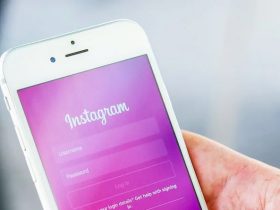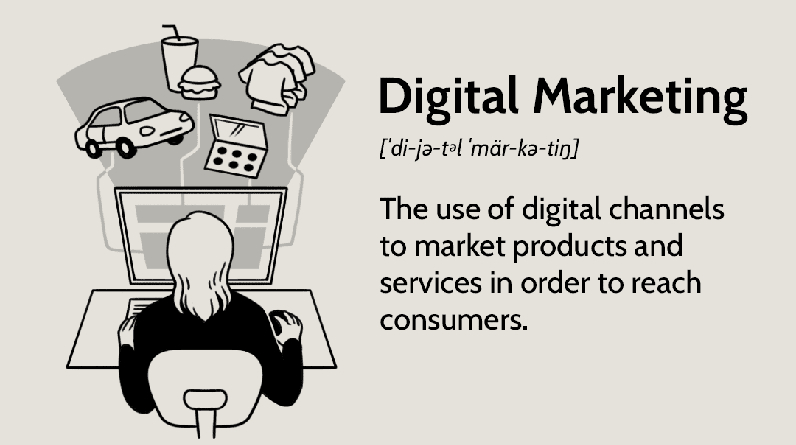With digital marketing, you can reach more people than with traditional methods and zero in on the leads most likely to make a purchase. In addition, you can track your progress daily and adjust your strategy as needed, making it more cost-effective than more conventional forms of advertising.
1. You can zero in on the customers who are most likely to buy what you’re selling.
There isn’t much you can do to restrict who sees your TV, magazine, or billboard ad. Certain demographics, such as the magazine’s typical readership or the demographic of a certain neighbourhood, can be measured, but it’s still mostly a guess. With digital marketing, you can zero in on a specific demographic and send them highly relevant, persuasive content.
Advertisements can be targeted to specific users on social media based on demographic information such as age, gender, location, interests, networks, and user behaviour. You could also use pay-per-click (PPC) or search engine optimization (SEO) methods to target users who have already demonstrated an interest in, or searched for, terms related to your product, service, or industry.
In the end, digital marketing facilitates the investigation required to determine your buyer personas and hone your strategy to ensure you are addressing the needs of the most likely purchasers.
2. It saves money compared to traditional outbound marketing strategies.
Daily campaign performance can be monitored with the help of digital marketing, allowing you to better allocate resources and achieve a greater return on investment. However, the same cannot be said of conventional advertising methods. Your billboard’s price will remain the same whether or not it generates any leads.
With digital marketing, you can also pick and choose which channels to invest in. Instead of investing in pay-per-click (PPC) campaigns, maybe you use the funds for design software to make highly engaging Instagram posts. You can quickly adjust your focus and stop wasting resources on low-performing channels with a digital marketing strategy. To get the most out of your advertising dollar, digital marketing is generally a more cost-effective option.
For instance, if your company has a limited marketing budget, you could try putting that money toward social media marketing, blogging, or search engine optimization.
3. Competing with larger brands is now possible thanks to digital marketing’s level playing field.

Working for a small company can make it tough to compete with larger competitors who can afford to spend millions on advertising. Luckily, there are a lot of openings to outrank the big dogs through clever online advertising campaigns.
Using long-tail keywords is one strategy for producing search engine optimised content. When determining which content to prioritise, search engines don’t care which brand is the most well-known; what matters is which content is most relevant to the users who are actually doing the searching.
4. The success of your digital marketing campaign can be tracked.
Advertisements in the conventional sense can be useful for certain purposes, but it is difficult to gauge their precise impact. One of the greatest advantages of digital marketing is that it allows you to see the entire process from beginning to end, from impressions to shares to views to clicks to page views to time on page.
When compared to traditional forms of advertising, digital campaigns yield quantifiable results that can be monitored in near real time. Advertisers who have tried to gauge how many readers saw their ads in print publications know the challenge of doing so. There is no foolproof way to determine if the ad actually increased sales.
But with digital marketing, you can track the success of every single one of your campaigns.
Some examples are as follows:
Viewership of Online Content
Using digital analytics software found in marketing platforms like HubSpot, you can see the exact number of people who have visited your website’s homepage in real time when engaging in digital marketing. Not only can you track their path through your site, but also the number of pages they viewed, the type of device they used, and the origin of their visit with the help of digital analytics tools.
Depending on the volume of traffic each marketing channel generates for your site, you can allocate your resources accordingly. If only 10 percent of your site visitors are coming from organic searches, for instance, you know you need to devote more time to search engine optimization.
It can be hard to gauge an audience’s reaction to your brand in the pre-sale phase of offline marketing, when they are still only exposed to your product through print or broadcast media. If you’re using digital marketing, you can see patterns in customer behaviour long before they’ve made it to the purchase decision stage, which means you can tailor your marketing strategy from the get-go.
Productivity of Content and Prospecting Success
The offline content you distribute through people’s mailboxes is the brochure you made to promote your product. The issue is that you can’t tell how many people actually read your brochure before tossing it.
As an alternative, let’s pretend that the brochure is available online. The number of people who have visited the page it’s on can be tracked, and leads can be collected via a form for follow-up. Downloads of your content serve two purposes: first, you can track how many people are interested in what you have to say, and second, they can bring in new, potentially-interested customers.
Modeling Attribution
With the right digital marketing strategy, tools, and technologies in place, you can track each sale back to the very first digital interaction a customer had with your company.
This technique, known as attribution modelling, can help you determine which aspects of your marketing and sales strategy are working and which ones need improvement based on patterns in how your customers find and purchase your product.
Establishing a bridge between advertising and selling is crucial. LinkedIn reports that 87% of sales and marketing leaders agree that sales and marketing collaboration is critical to business growth, but that misalignment between the two teams can have a negative impact on financial results. If you can use digital technologies to smooth out the buying process for your customers, it will likely have a positive effect on your company’s bottom line.
5. A digital marketing plan can be modified and adjusted with less hassle.
Building a successful advertising campaign takes time and effort. Typically, you would see the plan through to its conclusion, give it time to take effect, and then evaluate the outcome. True, life rarely operates in a straight line. Halfway through, you may realise that a calculation was off, an assumption was wrong, or the audience did not react as expected. The ability to make course corrections or adjustments as you go along is invaluable, as it keeps you from having to restart from square one.
6. One of the best things about digital marketing is how flexible it is.
In comparison to more conventional advertising methods like direct mail or billboards, adjusting to digital marketing is much simpler. If an online ad isn’t performing as well as hoped, for instance, it can be easily tweaked or stopped to start generating better results.
Conversion rates and lead quality can both be increased through digital marketing.
The increased ease with which digital marketing metrics can be tracked also makes it easier to fine-tune your conversion rates. Improving your strategy-making requires you to be able to quantify the results of your efforts. Constantly tweaking your processes will increase your conversion rate. The best return on investment (ROI) can be attained by investing in online marketing.
See Also: What If Joe Biden Doesn’t Run For The 2024 Elections?
It’s also important to note that not all leads are created equal in terms of the value they can bring to your company. Using digital marketing, you can narrow your focus and generate more qualified leads who are more likely to convert into paying customers. Establishing connections with the best leads in your industry will have a direct impact on your company’s conversion rate.
7. Connecting with target demographics at any point in the customer journey is a breeze with digital marketing.

It’s crucial to start interacting with your audience right away. Making a connection at the first stage of the buyer’s journey helps push the lead through the customer funnel. To do so, from beginning to end and at every stage in between, digital marketing is indispensable.
Online channels allow you to follow the entire buying journey of your customers. Lead conversion relies on a thorough understanding of and analysis of customer behaviour. With digital marketing, you can monitor their progress in real time. And, even if they don’t convert in the early stages, it at least helps ensure they have made a connection with your business.

















Leave a Reply